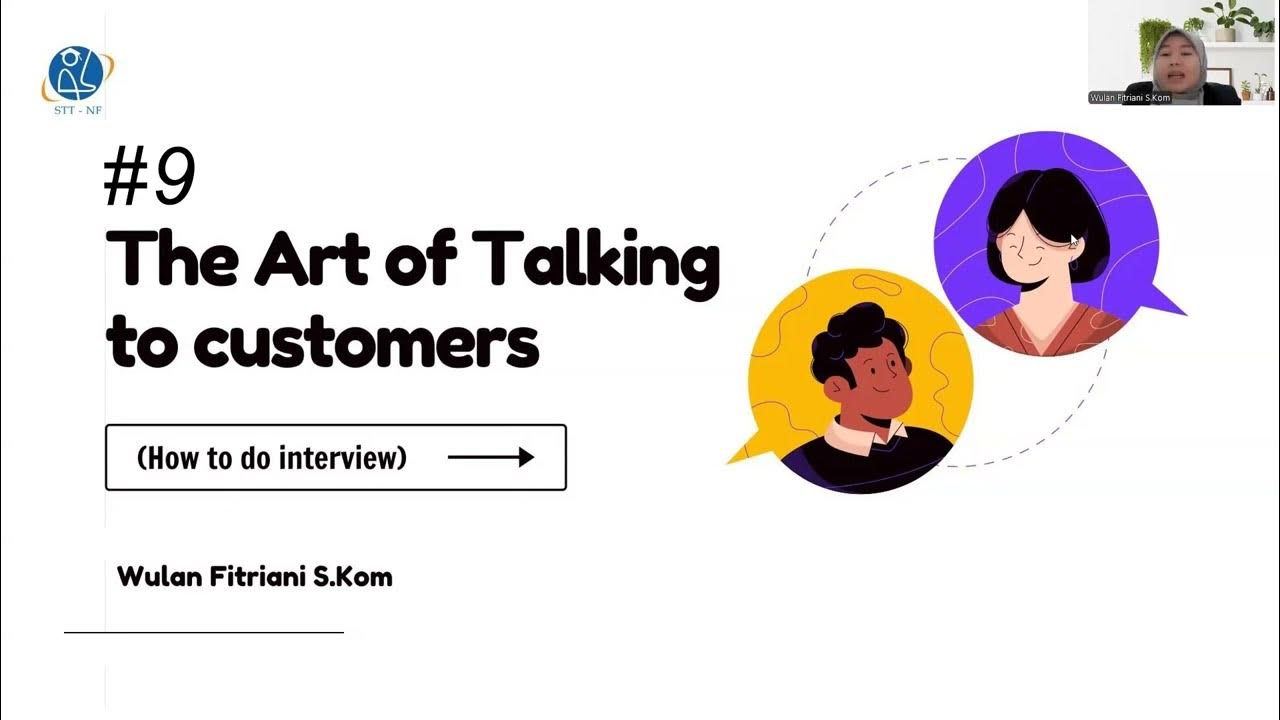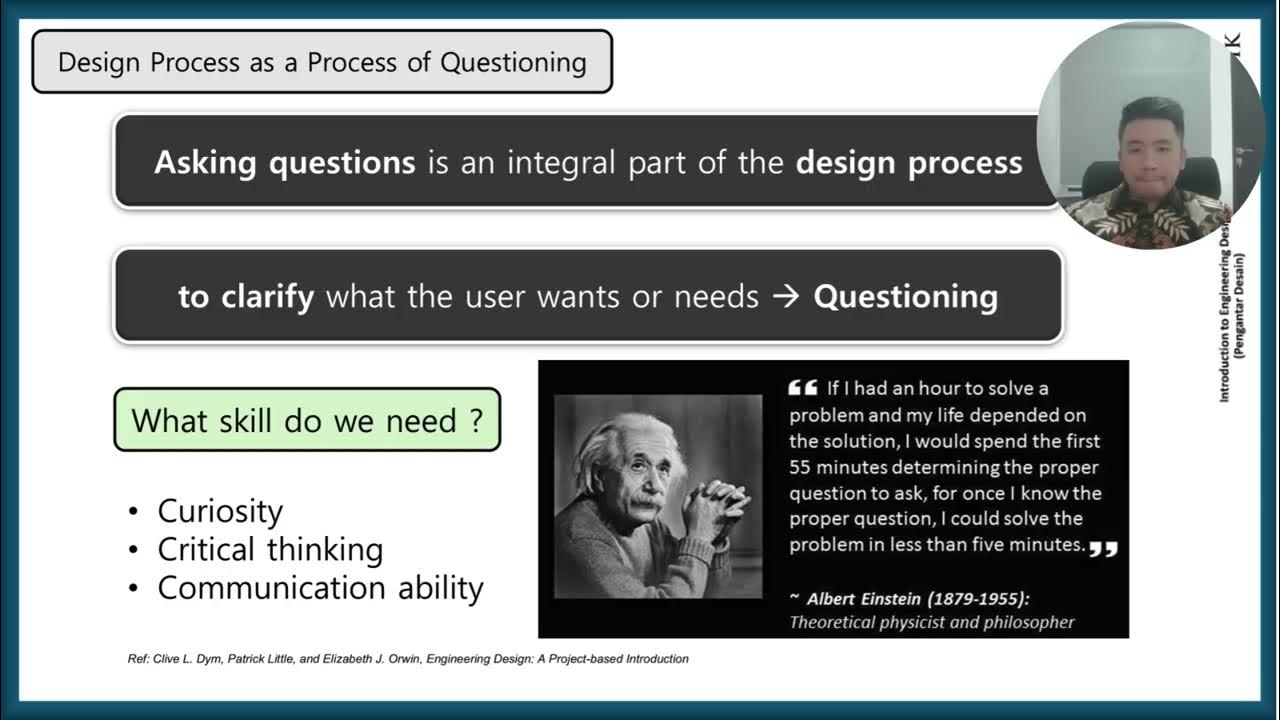Design Thinking in 90 Seconds
Summary
TLDRDesign strategy involves empathizing with customers by observing their real-life behaviors and conducting open-ended interviews to uncover their true needs. Instead of asking customers what they want, designers immerse themselves in the customers' world to gain insights and brainstorm solutions. An example is an Australian supermarket chain that created an in-store milk dispenser with old-style glass bottles, offering high-quality milk and connecting customers with the origins of their produce. This approach delights customers and differentiates the store, illustrating the power of designing with empathy and insight.
Takeaways
- 🤔 Design strategy involves thinking from the customer's perspective to create solutions that meet and exceed their expectations.
- 👣 Empathy is crucial in design strategy; it's achieved by observing customers in real-life scenarios and through open-ended interviews to understand their actions and needs.
- 🔍 Observing rather than asking is key to uncovering non-obvious insights because people may not always know what they want.
- 🌐 Immersion in the customer's world helps to identify their needs, gains, and pains, leading to more effective design solutions.
- 💡 The design strategy process includes ideation, brainstorming, prototyping, and MVP development to quickly test and refine ideas.
- 📝 Prototyping involves creating a Minimum Viable Product (MVP) to gather customer feedback and iterate on the design.
- 🔄 The design strategy starts with understanding the customer and then offers a solution, rather than starting with a solution and trying to fit it to the customer.
- 🛒 An example of successful design strategy is an Australian supermarket chain that created a unique in-store experience by observing and empathizing with customers.
- 🥛 The supermarket chain's innovative idea of an in-store milk dispenser with old-style glass bottles provided a connection to suppliers and a unique shopping experience.
- 📈 This experience not only delighted customers but also benefited suppliers by allowing them to receive a better price for their high-quality milk.
- 💖 The design strategy's success lies in its ability to connect with customers on a deeper level, engaging their hearts and minds.
Q & A
What is the primary focus of design strategy according to the transcript?
-The primary focus of design strategy is to think differently by empathizing with customers, observing their real-life scenarios, and designing solutions that not only fit but also delight their needs.
Why is it important to observe people in real-life scenarios rather than just asking them what they want?
-Observing people in real-life scenarios is important because it uncovers what people actually do, which may differ from what they say they want. This approach helps in discovering non-obvious insights into customer needs and behaviors.
What does the transcript suggest about the process of immersing oneself in the customer's world?
-The transcript suggests that immersing oneself in the customer's world helps in understanding their needs, gains, and pains more deeply, which is essential for developing solutions that truly resonate with them.
What is the role of brainstorming in the design strategy process as described in the transcript?
-Brainstorming plays a crucial role in the design strategy process by generating multiple solutions for prototyping. It encourages creative thinking and the development of an MVP (Minimum Viable Product) of ideas in the shortest possible time.
How does the transcript illustrate the importance of taking prototypes back to customers for feedback?
-The transcript illustrates the importance of customer feedback by showing how prototypes are taken back to customers to ask for their thoughts. This iterative process helps refine the design strategy and ensures the solutions meet customer expectations.
What is the significance of starting with the customer and then offering the solution in design strategy?
-Starting with the customer ensures that the design strategy is customer-centric, focusing on their needs and experiences. This approach leads to more effective and relevant solutions compared to starting with a solution and trying to fit it to customer needs.
Can you provide an example from the transcript of how design strategy led to a successful in-store experience?
-An example from the transcript is an Australian supermarket chain that designed an in-store milk dispenser with old-style glass milk bottles. This idea delighted customers, connected them with the suppliers, and was successful across stores.
How did the supermarket chain use customer empathy to develop a unique in-store experience?
-The supermarket chain used customer empathy by following customers around, interviewing them, and observing in-store behaviors. They discovered that customers wanted to feel more connected with the suppliers of their produce, leading to the idea of the in-store milk dispenser.
What was the outcome of the in-store milk dispenser idea for both customers and suppliers?
-The in-store milk dispenser idea resulted in a delightful customer experience, allowing them to see details of the cows and farms that produced the milk. For suppliers, it led to receiving a better price and a unique way to connect with customers.
What alternative outcome might have occurred if the supermarket chain had simply asked customers what they wanted?
-If the supermarket chain had simply asked customers what they wanted, they might have received responses like 'cheaper produce,' which would not have led to the innovative and engaging in-store experience that they ultimately created.
How does the transcript emphasize the importance of connecting with customers' hearts and minds through design strategy?
-The transcript emphasizes the importance by showing that the successful design strategy goes beyond functional needs and taps into emotional connections. The in-store milk dispenser example demonstrates how a unique experience can excite customers and create a lasting impression.
Outlines

Cette section est réservée aux utilisateurs payants. Améliorez votre compte pour accéder à cette section.
Améliorer maintenantMindmap

Cette section est réservée aux utilisateurs payants. Améliorez votre compte pour accéder à cette section.
Améliorer maintenantKeywords

Cette section est réservée aux utilisateurs payants. Améliorez votre compte pour accéder à cette section.
Améliorer maintenantHighlights

Cette section est réservée aux utilisateurs payants. Améliorez votre compte pour accéder à cette section.
Améliorer maintenantTranscripts

Cette section est réservée aux utilisateurs payants. Améliorez votre compte pour accéder à cette section.
Améliorer maintenantVoir Plus de Vidéos Connexes

How to do a user interview (from Google Ventures updated)

REKAMAN MATERI PERT 10 - THE ART OF TALKING TO CUSTOMER

Empathize - Introduction to Engineering Design

Apa itu Design Thinking? Dan Kenapa Sangat Populer? | CIAS QuickFix with Dr. Indrawan Nugroho

Customer Discovery: What Do You Ask, with Justin Wilcox

Module 2.2
5.0 / 5 (0 votes)
